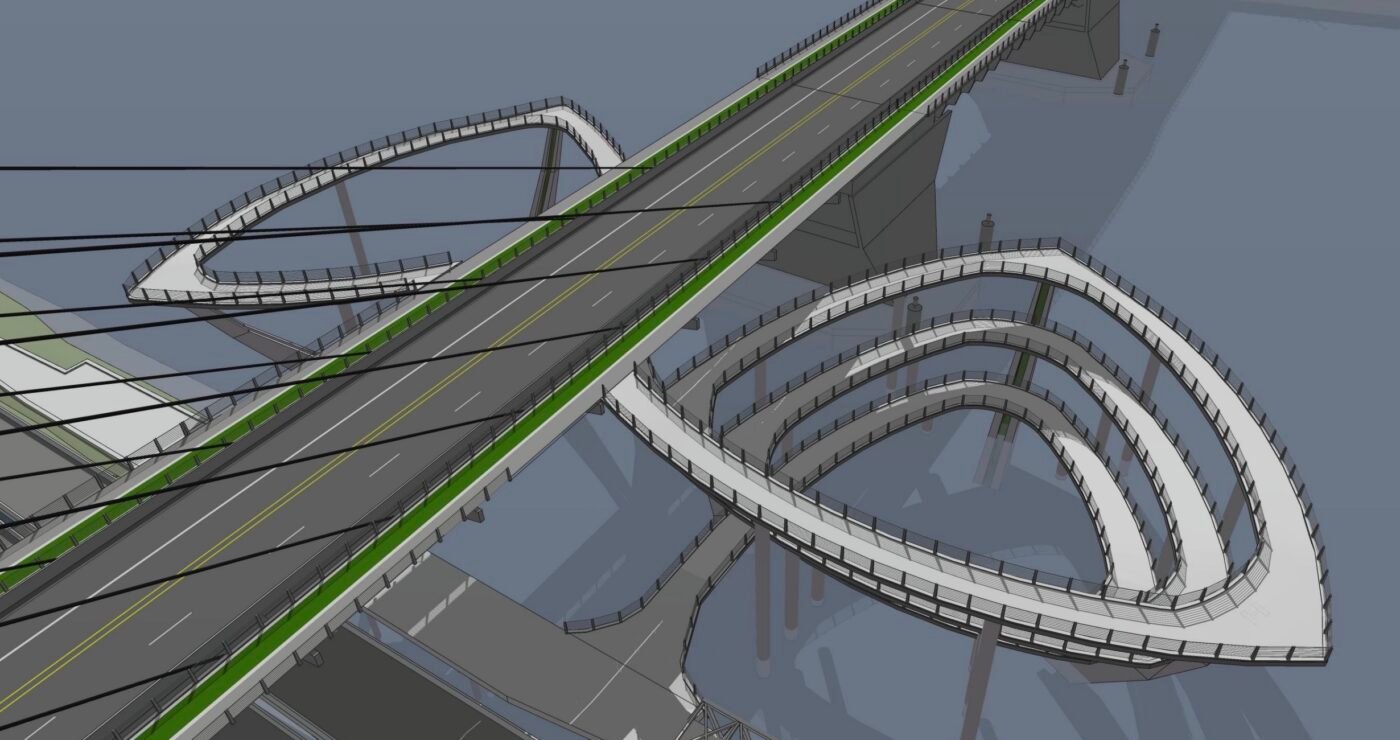Despite concerns over what will be a severe lack of accessibility between the Eastbank Esplanade and the new Burnside Bridge, Multnomah County officials have made it clear that a ramp for walkers and bicycle riders is not in the plans for their $895 million Earthquake Ready Burnside Bridge project.
When BikePortland last checked in on this project two years ago, former Transportation Commissioner Jo Ann Hardesty was going to bat for a ramp. “I see the city’s role of making sure that we are walking our talk when it comes to climate mitigation, when it comes to access to the water, when it comes to making sure that pedestrians, bicycles and walkers and rollers are safe on any new bridge that will be within the city of Portland,” Hardesty said at a city council meeting before helping pass a resolution that forced the County to take a long, hard look at a ramp.
Hardesty’s work on the issue was needed because County officials have never been eager to build a ramp between the east end of the new bridge and the popular Esplanade bike path — which is classified as a “Major City Bikeway” in city plans. The County initially felt a ramp would be too costly and planned an elevator and stairs instead. But pressure from Hardesty and many Portlanders who were wary of elevators due to their terrible reliability, forced the County to reconsider.
Hardesty added language to project documents that stated, “as a condition of approval, the EQRB [Earthquake Ready Burnside Bridge] program shall provide for an ADA accessible ramp connection to the Eastbank Esplanade from both the north and south side of the EQRB.”
But that wasn’t a legally-binding agreement.
When Hardesty lost her re-election bid to Rene Gonzalez and left city council at the end of 2022, Mingus Mapps was named transportation commissioner. One year later, in January 2024, after the City of Portland and Multnomah County completed a 197-page study on the ramp, Mapps signed a “letter of understanding” with County Chair Jessica Vega Pederson saying the construction of a ramp wasn’t worth the risks.
“The ramp design options were prohibitively expensive and presented a significant risk to project design, construction, and completion and (2) the ramps posed significant environmental impacts to the Willamette River shoreline and shallow water habitat,” the letter reads.
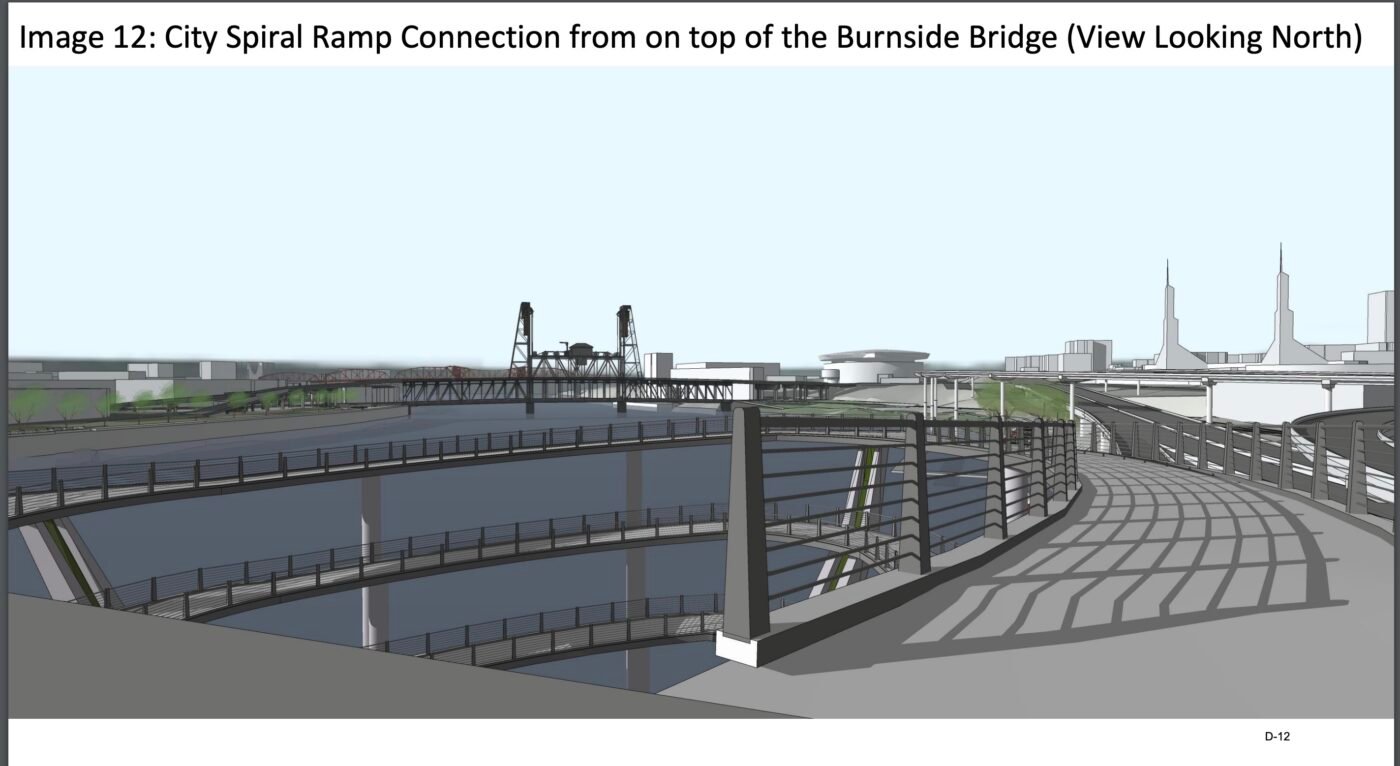
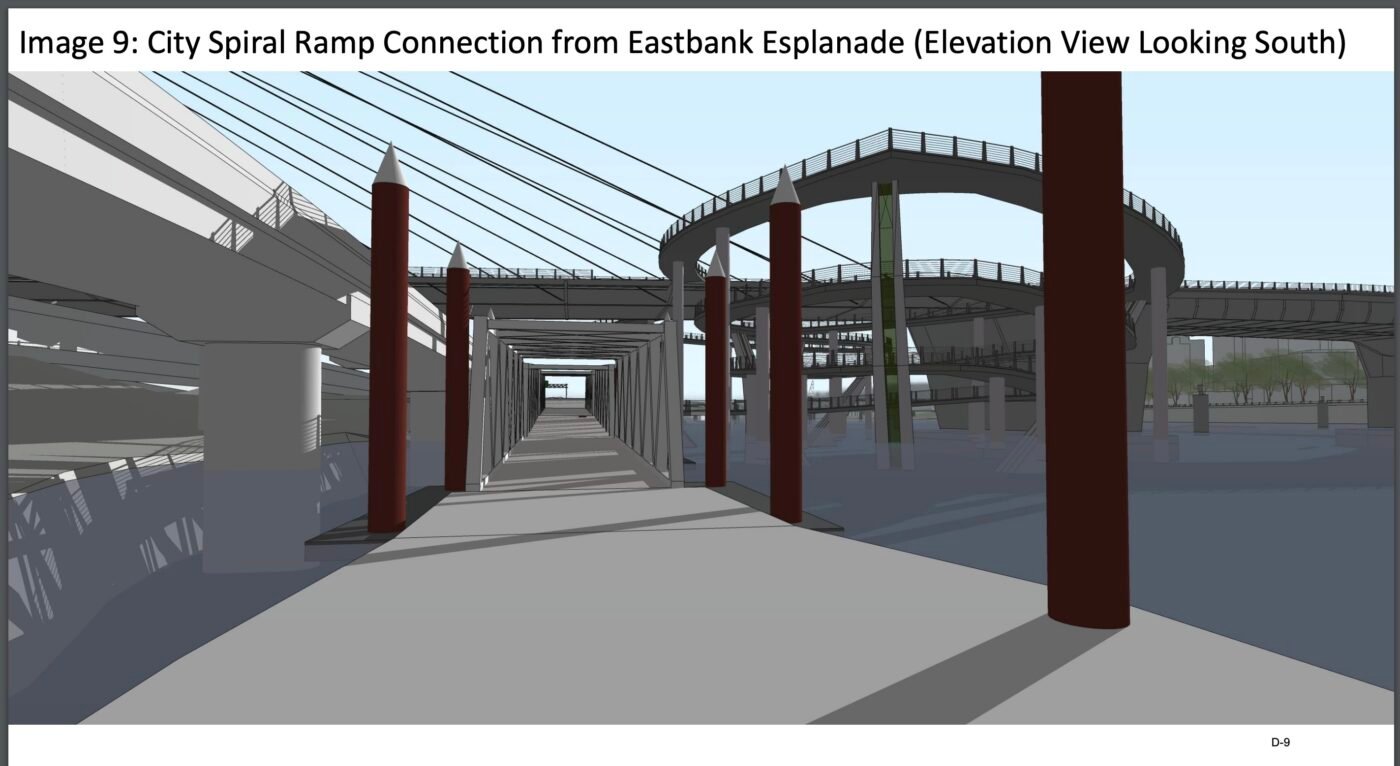
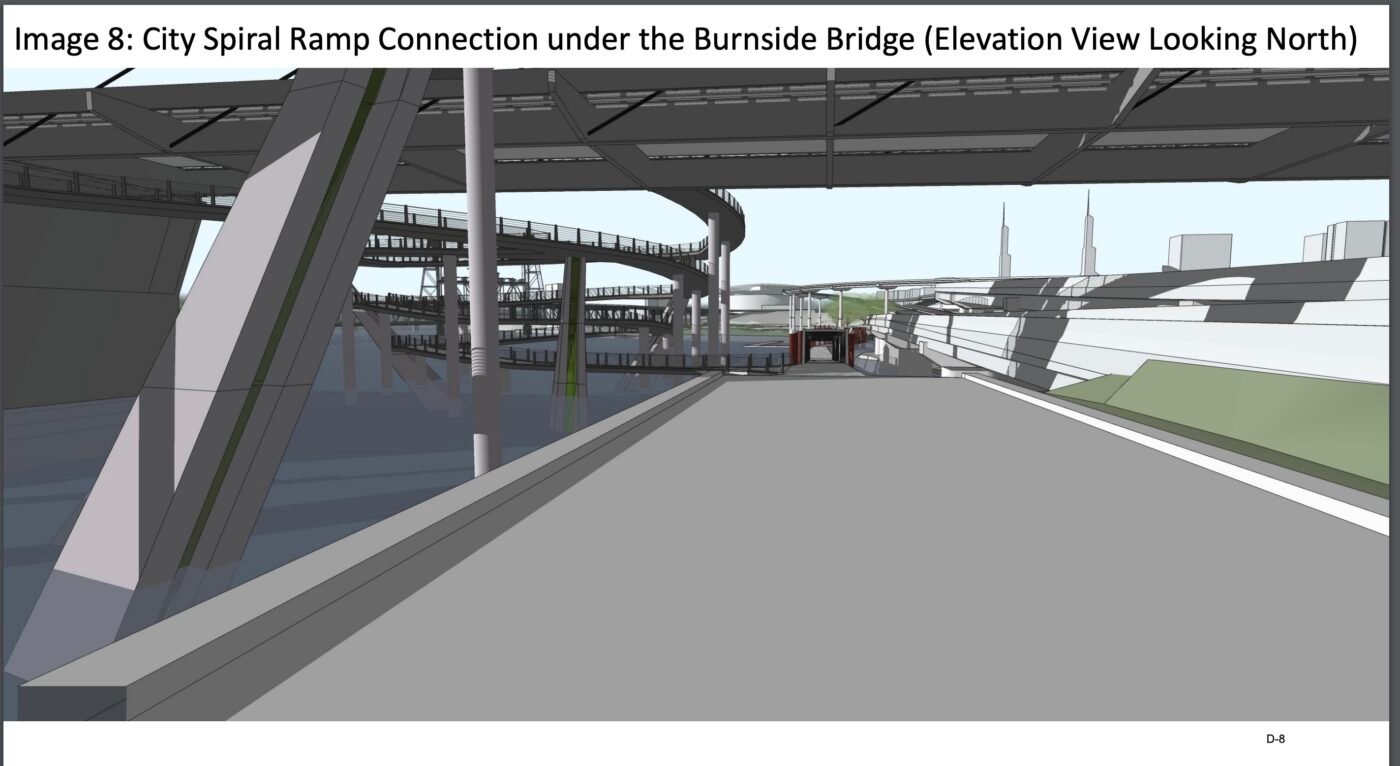
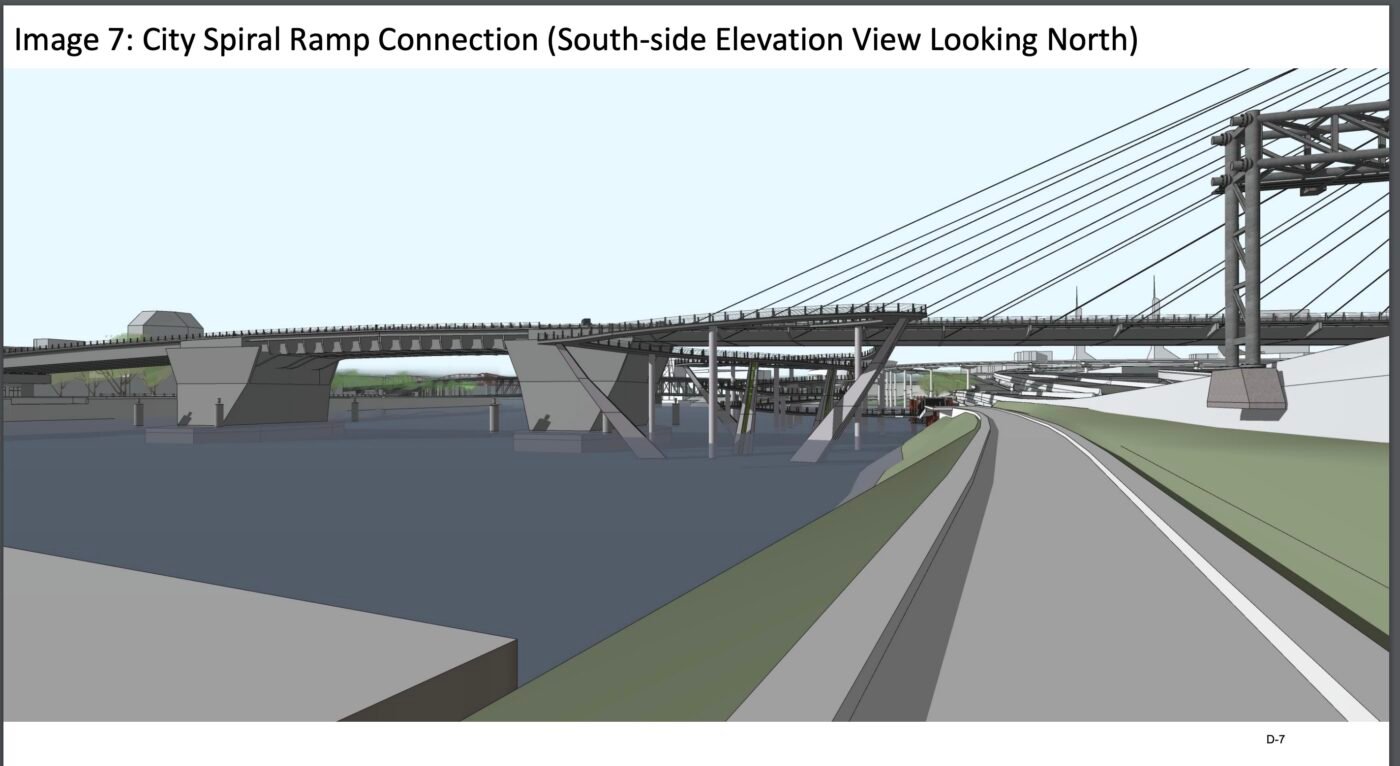

Engineers hired by the County estimated the cost of a ramp between $98 and $132 million, and related work needed to firm up riverbank soils would push it to as much as $300 million. The designs included spiral ramps on one or both sides of the new bridge, similar to the one that currently connects the Morrison Bridge to the river. Another sticking point was the additional permits needed to build it, which the ramp study said would cause a 1-2 year delay in construction.
“It would be a fatal flaw if there is not good pedestrian access to the Eastbank Esplanade.”
– Paddy Tillett, Community Design Advisory Group member
At a meeting of the project’s Community Design Advisory Group earlier this month and at another meeting last week, committee member Paddy Tillett, a retired architect, said “It would be a fatal flaw if there is not good pedestrian access to the Eastbank Esplanade.” “This will not be a Portland bridge if there is no direct access to Waterfront Park or the Esplanade,” Tillett continued.
Guenevere Millius, who represents the Sunnyside Neighborhood Association on the committee, agreed with Tillett. “There’s a lot of disappointment I’m feeling about not being able to connect to the Esplanade. I couldn’t believe my ears when I heard that myself.” Millius acknowledged the challenging issues a ramp poses for the project’s design and permitting, but she said, at the August 8th meeting, “Those are solvable problems.”
“It’s a great missed opportunity to not connect to both Waterfront Park and the Esplanade, which are two crown jewels of public access to the water,” Millius added.
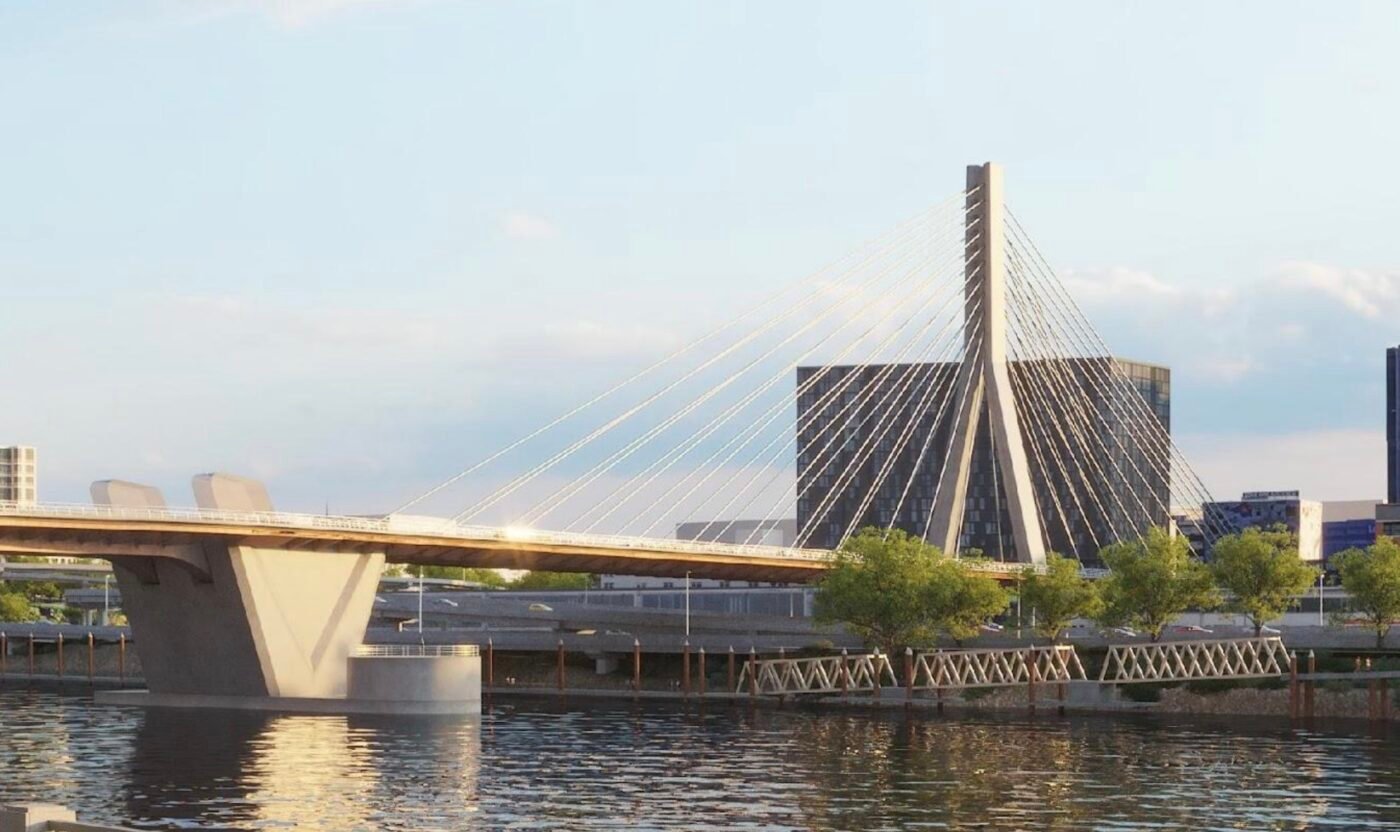
At the August 8th meeting, Multnomah County Engineering Services Manager Megan Neill said they spent four years trying to make something work out. “Ultimately,” she said, “we decided that a connection to the Esplanade would not be a part of this project.” Neill also said conversations with the city about what to do with the existing staircase (which isn’t ADA accessible) are still ongoing.
Multnomah County Director of Community Services Margi Bradway told BikePortland via email today that while the “risks and potential impacts” of building a ramp are “too great to overcome at this time,” the County has worked with the City of Portland to identify an ADA compliant route on sidewalks that will allow people, “to comfortably reach the east end of the bridge.”
But according to Tillett, the architect and urban designer on the community advisory committee, “If you approach from the east side, you walk a full six city blocks before you have any opportunity to get off the sidewalk. That’s a long way on foot.”
For Willie Levenson of Human Access Project, a nonprofit that works to bring more Portlanders to the river and wants to build a large park on the Esplanade adjacent to the new bridge, the County’s decision is, “disappointing.” Levenson told BikePortland the bridge plan is, “An example of the type of project that happens when operating from a scarcity mentality. I am not convinced there is not a viable ramp option that could work for a fraction of the $300 million cost estimate provided by the engineering firm the County hired.”
With the ramp off the table, Levenson is pivoting his advocacy to construction impacts. He fears the bridge construction will close the Esplanade for up to two years and he wants the County to mitigate those impacts.
The Community Design Advisory Group holds their final meeting tonight at 6:00 pm to cement their bridge design recommendation to the Multnomah County Board of Commissioners, who are expected to vote on the final design in October.

